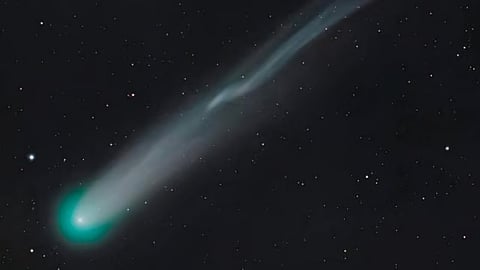14 celestial events to light up UAE skies before year-end
2025 will end with a series of spectacular celestial moments

Dubai: The UAE and the world are set to witness 14 celestial events, ranging from meteor showers and comet sightings to Mercury’s elongation and the Cold Moon, throughout the remaining months of this year until the end of December, according to a prominent UAE astronomer.
Quoted by Al Khaleej Arabic daily, Ibrahim Al Jarwan, Chairman of the Emirates Astronomical Society and member of the Arab Union for Astronomy and Space Sciences, said the coming months promise astronomy enthusiasts and casual stargazers a rare chance to experience the splendours of the night sky, featuring dazzling meteor showers, comet encounters and striking planetary alignments.
He emphasised that the best viewing experience requires clear, pollution-free skies far from city lights, noting that the most suitable time to observe meteors and comets is during the new moon phase. “The human eye needs about 20 to 30 minutes to adapt to darkness to reach maximum sensitivity for spotting faint celestial objects such as dim stars, meteors, or the Milky Way, a process known as dark adaptation.”
Among the most anticipated events, Al Jarwan highlighted that the Orionid meteor shower peaked on October 21 and was visible best after midnight. On the same night, the new moon will provide dark skies ideal for observing faint celestial bodies, while comet Lemmon will reach its closest point to Earth, about 71.8 million kilometres away.
On October 29, Mercury will appear at its greatest eastern elongation, visible after sunset on the western horizon, an ideal opportunity for stargazers to spot the elusive planet with the naked eye or a small telescope. Then, on November 8, comet Lemmon will make its closest approach to the Sun, possibly becoming visible to the naked eye from dark-sky locations.
Between November 17 and 18, sky-watchers can expect the Leonid meteor shower, producing up to 20 meteors per hour, followed by the new moon on November 20, creating optimal viewing conditions. The next day, Uranus will be in opposition to the sun, visible all night through a telescope.
In December, the full “Cold Moon” will rise on the 4th, followed by Mercury’s greatest western elongation on the 7th, making for excellent pre-dawn viewing. The Geminid meteor shower, one of the strongest of the year, will peak between December 13 and 14, dazzling viewers with up to 120 meteors per hour after midnight.
2025 will end with a series of spectacular celestial moments, the final new moon of 2025 on December 20, followed by the winter solstice on December 21, marking the shortest day and longest night of the year in the Northern Hemisphere. That same night, the Ursid meteor shower will reach its peak, offering a modest display of 5–10 meteors per hour, best observed after midnight, especially under dark, moonless skies.
“These spectacular events remind us of the vast beauty of our universe and offer a unique opportunity for people across the UAE to reconnect with the night sky, Al Jarwan added.
Sign up for the Daily Briefing
Get the latest news and updates straight to your inbox


